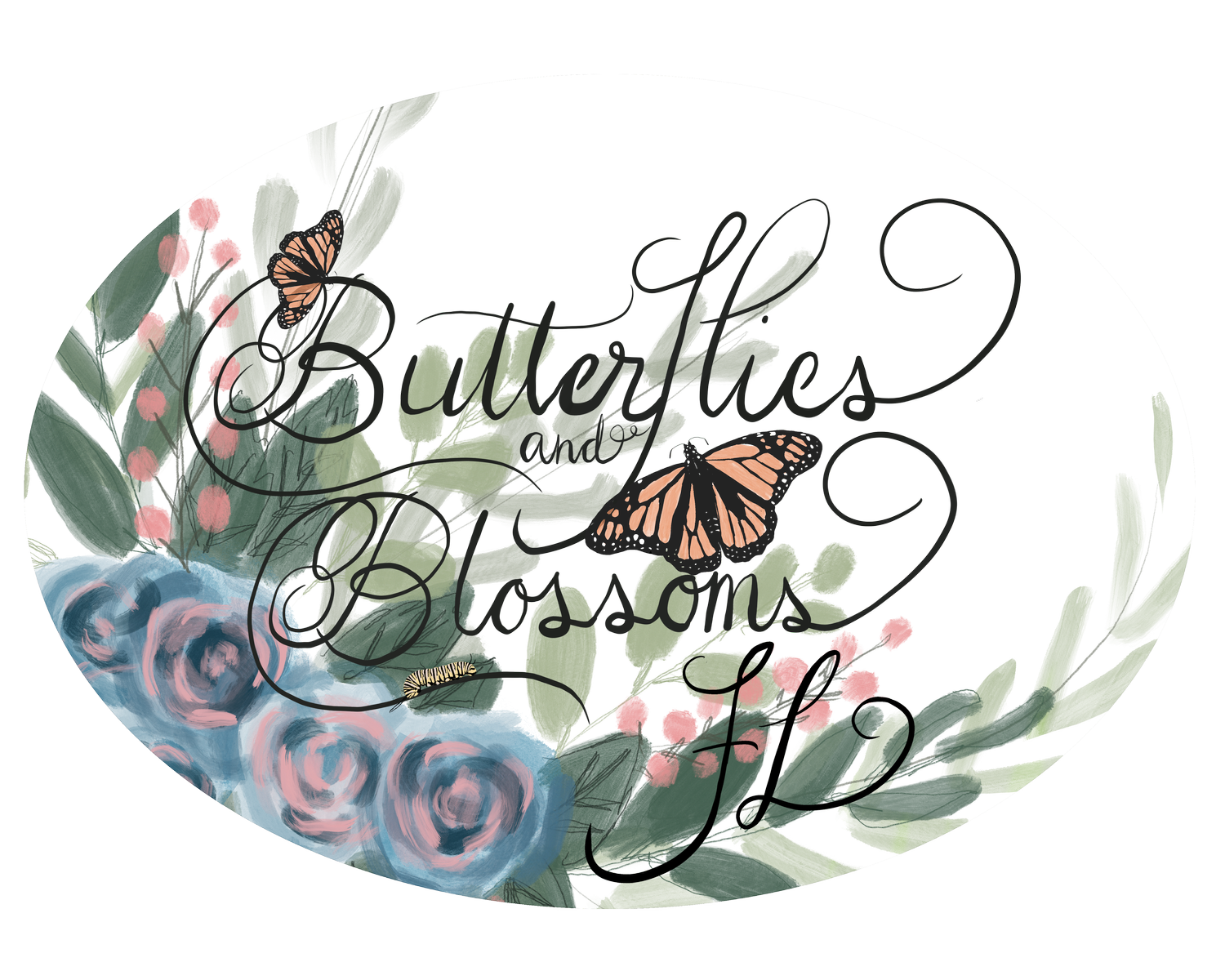Diary of a Gardener Butterflies & Host Plants: Creating a Garden That Welcomes Nature
True story: I was at a plant sale as a vendor when a gentleman approached my table, browsing my plants. My big "Butterflies and Blossoms" sign was front and center. He wasn’t very chatty, but I tried to help guide him to the plants he might be interested in—houseplants, succulents, and then I said, "Here are the Florida native plants that attract pollinators and butterflies."
Without hesitation, he blurted out, "I do not want any butterflies in my yard."
I was in complete shock, unsure of how to respond. My knee-jerk reaction was to say, "Well, sir, you may want to scoot on down the line," but instead, I said nothing. I'm sure the look on my face was one of horror. He went on to say he didn’t want caterpillars either. Rather than attempting to educate him, I simply smiled and nodded, hoping he would leave soon.
Here’s the thing—you can’t keep butterflies, moths, or other pollinators out of your landscaping entirely. However, by avoiding plants they need for food and shelter, you can certainly deter them. If you want butterflies in your yard, you need both nectar plants and host plants.
The flaw in his thinking is that without pollinators and beneficial insects, you increase the likelihood of attracting unwanted pests. Without natural predators, those pests can become a real problem. But hey, who am I to argue? He clearly had it all figured out, right?
Now, if you’re reading this, I assume you do want butterflies in your garden. And to do that, you must plant host plants.
What Is a Host Plant?
A host plant is a plant that a butterfly or moth species relies on for survival. It’s where they lay their eggs, and the caterpillars will eat only that specific plant before pupating into their chrysalis. Think of it like a child who will only eat chicken fingers—each butterfly species has its own preferred “chicken fingers.”
Here in South Florida, we have a variety of butterflies. The most common ones I see are Monarchs and Gulf Fritillaries, but my favorite is the Giant Swallowtail. Its wingspan stretches several inches across, and it glides majestically from plant to plant.
If you want to attract butterflies, here are some common host plants you should add to your landscape:
Common Butterfly Host Plants
Milkweed (Asclepias perennis or Asclepias incarnata) – Monarch host plant. Monarch caterpillars will devour the entire plant, so I suggest planting it behind other plants to keep it from being an eyesore. I strongly recommend planting native milkweed, as Florida’s Monarch population is endangered due to habitat loss. Native milkweed can be a bit finicky, going dormant in winter, but it will return in the spring.
Parsley, Dill, Fennel, and Rue – Black Swallowtail host plants. These caterpillars are often mistaken for Monarchs but have subtle lime-green stripes. Be sure to purchase plants that haven’t been treated with chemicals.
Wild Lime and Citrus – Giant Swallowtail host plants. Their caterpillars resemble bird droppings—a clever disguise! They won’t strip your plants bare but will nibble on the leaves. Wild Lime is a native shrub/tree with thorns and small white flowers, though it doesn’t produce edible limes.
Dutchman’s Pipevine – Pipevine Swallowtail host plant. This vine has intricate, tapestry-like flowers. It can be aggressive and reseeds itself, but the caterpillars usually keep it in check.
Passionvine – Gulf Fritillary and Zebra Longwing (Florida’s state butterfly) host plant. Gulf Fritillaries will eat the entire vine, though it often grows back. Planting a second, non-host vine alongside it can help maintain an attractive landscape. Zebra Longwings prefer passionvines growing in partial shade, and their pretty white caterpillars don’t decimate the plant.
Coontie – Atala butterfly host plant. This native plant has a long history in Florida, dating back to the Seminole people. Both Coontie and Atala butterflies have faced endangerment but are making a resurgence. The caterpillars only eat the leaf tips, so the plant remains intact.
Bahama Cassia, Privet Cassia, and Christmas Cassia – Host plants for Cloudless Sulfur, Orange-Barred Sulfur, and Sleepy Orange butterflies. These bright yellow caterpillars blend in with the yellow cassia flowers, making them hard to spot. They only eat the flowers, leaving the rest of the plant untouched. A must-have for butterfly lovers!
There are many more host plants for Florida butterflies, but these are some of the most common and easiest to find. They also work well in home landscapes, including HOA communities. Herbs and milkweed can be grown in pots, vines can climb trellises, and Coontie can be used as a textural shrub.
I love butterflies and encourage everyone to plant as many pollinator-friendly plants as possible—it’s vital to our local ecology. As the saying goes, "If nothing is eating your garden, you’re not part of the ecosystem."
There’s so much more I could say on this subject, but for now… go get some parsley and milkweed, and wait for the butterflies to visit!
Remember—always keep growing.

